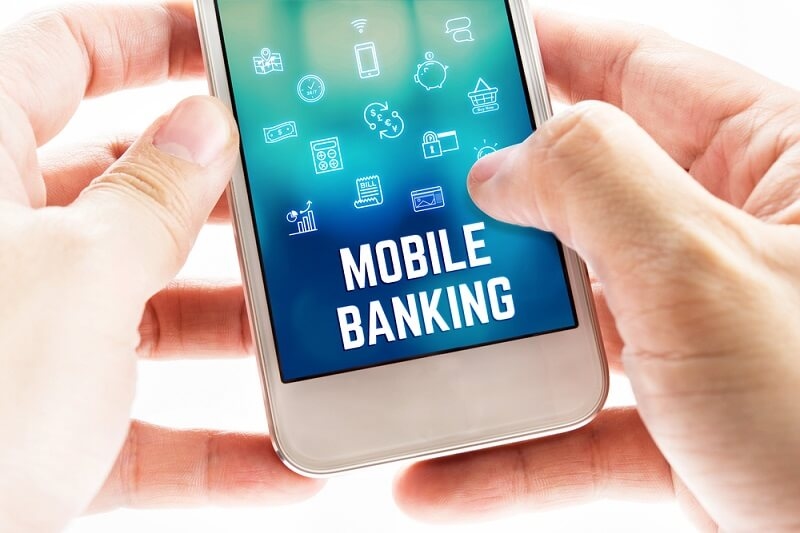
In the fast-paced, technology-oriented world, mobile banking applications can make managing finances more manageable. These applications allow individuals to monitor spending, purchase, and promote financial organization from a single location. Smartphones can be mobile financial command centers to access banks and banking services.
This guide will provide instructions on how to use mobile banking applications for managing everyday finances, regardless of whether you are new to the app or advanced banking tools. It will provide instructions on bank app highlights and features, mobile check deposit instructions, how to track spending and expenses with banking apps, and safe banking on your phone.
Mobile banking is quickly becoming a significant component of personal finance. Today, most banks offer mobile apps loaded with features. Banking apps allow people to avoid the bank altogether, eliminate long lines, and conduct their banking activities whenever and wherever it is most convenient.
As digital literacy improves, more people are becoming comfortable using mobile banking apps. People now realize an additional benefit of these services: better money management.
If you've never used a mobile banking app, that's OK! The process is simple.
Please download the official banking app from either the App Store (for iOS) or the Google Play Store (for Android). Ensure you find the verified version from your bank, and don't download any third-party versions or lookalikes.
You will probably need to use your existing online banking login credentials to log in (if you're a new user, follow the app prompts for registration). Registration typically includes verifying your identity, setting security questions, and creating a password or PIN.
2FA is essential for secure banking on your phone. You will want a two-step process where, every time you log in, you are given a temporary code that either goes to your mobile device or comes to your email, which is also required for logging in each time.
Most mobile banking apps will allow you to personalize how your app looks and the organization of your home screen. You can choose which account or functionality, i.e., checking, savings, credit cards, recent transactions, or all of them, to have easy access on your home screen/dashboard.
You can set alerts for low balances, significant transactions, deposits, or any other of your choosing. Alerts will help remind you about things and will help guard against overdraft fees and fraud sometime in the future!

Modern banking apps offer much more than just balance checks. Explore these best features of banking apps to make your financial life easier and more efficient:
Schedule recurring payments for utilities, loans, or subscriptions. You can also transfer money between your accounts or send money to others via services like Zelle or your bank’s internal transfer system.
The mobile check deposit tutorial feature allows you to deposit checks without visiting a branch.
Here’s how to do it:
You’ll receive a confirmation, and the funds typically clear within one to two business days.
You can learn how to track expenses with banking apps using built-in financial tools. These often include:
This feature makes it easier to spot spending patterns and identify savings opportunities.
Many apps allow you to create savings goals (like a vacation or emergency fund) and automate deposits toward them. You can set rules, such as transferring $20 to savings every time you get paid, rounding up purchases to the nearest dollar, and saving the difference.
Several banking apps now offer free credit score tracking and reports. Use these insights to manage your credit health and prepare for future financial decisions like applying for loans or credit cards.
Protect your real card details with virtual cards that you can use for online purchases. Also, link your debit or credit cards to digital wallets like Apple Pay, Google Pay, or Samsung Pay for tap-to-pay convenience.
As promised, let’s explore the mobile check deposit tutorial more thoroughly. This is one of the most convenient features offered by mobile banking apps.
Pro tip: Double-check for camera clarity and alignment. Blurry photos may result in failed deposits.
Tracking expenses is essential for building financial awareness. Instead of relying on spreadsheets or separate budgeting apps, you can directly track expenses with banking apps.
Regularly checking this data helps avoid impulse spending and aligns with financial goals.
With convenience comes risk. It is crucial to practice safe banking on phone devices to protect your personal and financial information.
Remember, your mobile banking app is only as secure as the device it’s on. Keep your phone locked and updated.
Now that you know how to use mobile banking apps and the best features of banking apps, let’s look at real-world ways to use them daily.
Small, consistent actions can significantly impact financial health. Your banking app can help you stay engaged, proactive, and informed.
Even the most user-friendly app can’t solve every problem. Contact your bank’s customer support through the app or by phone if you:
Most apps now offer live chat, virtual assistants, or secure message centers for fast help.
When implemented wisely, mobile banking apps are powerful. By learning to use mobile banking apps to control how you handle your money in day-to-day activities, you are helping yourself stay in the driver’s seat with little fuss.
With banking apps on your phone, you can track expenses, deposit checks, and keep your banking secure. These apps allow you to manage every dollar more wisely, efficiently, and securely.
You can take time to explore banking apps and integrate all of their best functions into your everyday banking habits. By just spending a few taps a day, you will be able to build better behaviors, mitigate costly mistakes, and always keep yourself in control of your money, whenever and wherever you are.
This content was created by AI